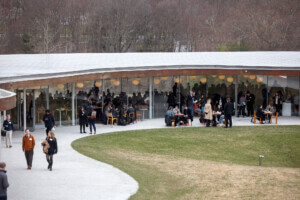Concrete is perhaps the most prolific and malleable construction material in the world, but our continued dependence on it may be contributing to climate change more than was previously known.
The English international affairs think tank Chatham House recently released a report that attributed approximately eight percent of the planet’s annual carbon dioxide emissions to concrete production. The chemical processes used to create cement, burning limestone and clay in a high-temperature kiln and grinding the result, contributes the greatest share of emissions (though the collection of sand, a commonly used aggregate, has its own problems).
With the 24th Conference of the Parties to the United Nations Framework Convention on Climate Change (COP24) complete, a “rulebook” for enacting the 2015 Paris Agreement on climate change was agreed on by the 23,000 international delegates present. Even with a guide in place for reducing carbon dioxide emissions, the problem with concrete is that demand is only expected to rise.
Currently, the world produces 4.4 billion tons of concrete annually, but that number is expected to rise to over 5.5 billion tons by 2050 as poorer countries rapidly urbanize, according to the Chatham House report. For the concrete industry to fall in line with the Paris Agreement’s targets, emissions will need to fall 16 percent from current levels by 2030. The report argues that target is already an ambitious goal.
The production of Portland cement, the kind most widely used today, has remained largely the same since the 1800s. Limestone and clay combine in the kiln to form carbon dioxide and “clinker,” a substrate then mixed with limestone and gypsum to create cement. According to Chatham House, research into “alternative clinker” and low-carbon production methods has thus far been slow going.
Less energy-intensive kilns, new types of clinker, carbon capture technology, and switching to renewable energy during the production process will all be necessary “to achieve CO2 reductions consistent with at least a 50 percent chance of limiting the average global temperature increase to 2°C above pre-industrial levels by 2100,” according to the BBC.
Timber, which sequesters the carbon dioxide absorbed by trees over their life, has slowly but surely made strides in replacing concrete in some projects. High-rise timber buildings have gotten a green light in Oregon, and continued research into carbon-neutral (or negative) projects is continuing apace.











